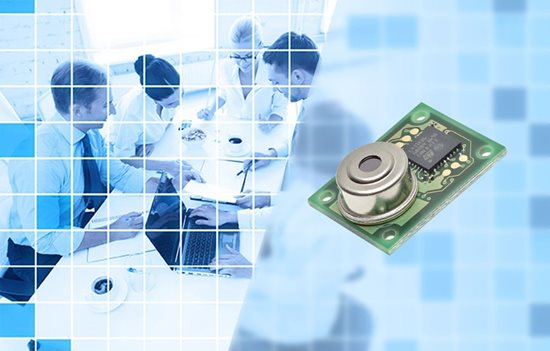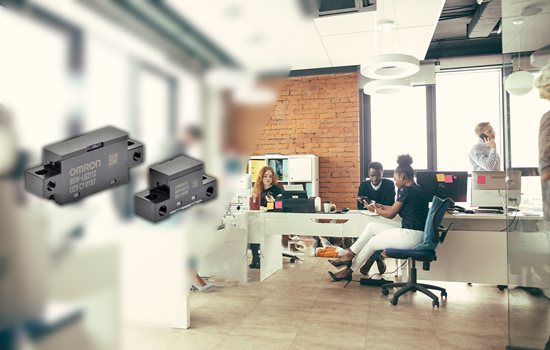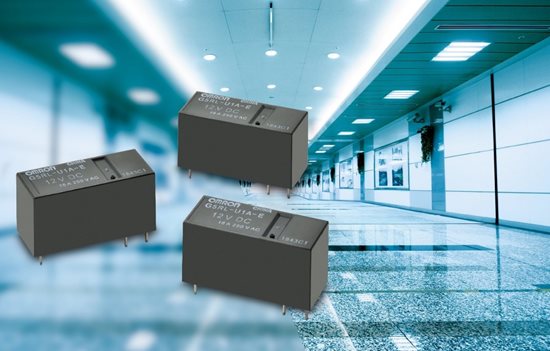Lighting Control in the Post-COVID Office
Products
OMRON has developed an extensive portfolio of components that comprise the next generation of lighting control.
By Fabrizio Petris, Senior Business Development Manager and Gabriele Fulco, Product Marketing Manager for Sensors at OMRON Electronic Components Europe BV
Hoofddorp, Netherlands, Tuesday, 11 May 2021 – The new normal is set to make a considerable impact on our workplaces, in response to new anxieties and behaviours. Workers will naturally be much more cautious about using shared surfaces such as light switches, doors, drinks dispensers, soap dispensers and toilet flushes.
In addition, life after COVID-19 is likely to result in the need to restrict and monitor numbers of people present in an office. This caution is set alongside existing concerns amongst facilities managers to control services and minimise energy wasted through lighting unoccupied areas, with the goal of optimizing space utilisation and saving energy costs. Thankfully, there is a wide range of solutions available for lighting and building management in offices. Technologies that have been hiding in the background for a long time will finally come into their own in our workplaces for controlling occupancy ratio, saving energy and eliminating the need to touch shared surfaces.
Thermal sensors
There is an increasing demand amongst facilities managers for people detection systems, with lights and other services turned off automatically if no people are present. Temperature measurements can be used to detect the presence or absence of people in a space and to confirm that a system is operational. Such thermal sensors need a wide field of view, so that they can detect the presence and location of people in a space, accurately and reliably.

OMRON D6T thermal sensors are based on an infrared sensor which measures the surface temperature of people and objects
For example, OMRON D6T thermal sensors (Figure 1) are based on an infrared sensor which measures the surface temperature of people and objects without touching them. It achieves this by using a thermopile element, which absorbs radiated energy from the target object. The state-of-the-art MEMS thermopile is integrated with custom designed sensor ASIC that bundles a signal processing microprocessor and algorithm into a tiny package. As a result, the sensor is reputed to offer the highest signal-to-noise ratio (SNR) in the industry. For lighting applications the D6T 32x32, a wide-angle version of the device based on 32 x 32 elements provides a view across 90.0° by 90.0°. This equates to a field of view measuring 360cm x 360cm at 2m distance, so allows people to be detected in a wide space. When applied efficiently, such thermal sensors can monitor movements within a building and occupancy ratio for a better usage of office space. They can also control lighting and HVAC for energy saving opportunities.
Light Convergent Sensors
Every day in the workplace and other public environments we touch countless switches that have also been touched by hundreds of complete strangers. Pre-COVID, we all reached for the light switch in a room without a second thought, but these days we are far more cautious. Fortunately, contactless sensors provide an ideal solution that can be easily implemented in environments where the spread of harmful bacteria and viruses needs to be reduced. The latest devices offer exceptional performance, with a longer detection distance and a convergent lighting beam that triggers accurately on an object within a tightly specified target area, ignoring any objects in the background or foreground.
For example, OMRON B5W-LB LCR (Figure 2) is a light convergent reflective sensor distinguished by the reliability and repeatability of its detection performance. The sensor’s convergent light beam can be accurately set to trigger on the presence of an object within a tightly specified target area (55mm and 10mm sensing distances available) and ignore any objects in the background or foreground. The robust design is resistant to any environment and designers can use digital outputs for a simple, easy to integrate electronic control that consistently delivers the expected performance. In short, this is highly reliable touch free detection, giving the ability to control light without making contact with a switch.

OMRON B5W-LB LCR can be set to trigger on the presence of an object within a target area
Returning to relays
If these sensors are the ‘eyes and ears’ of a building automation system, it also needs ‘hands’ to act in response. It needs control over outputs: heaters, lights, fans and other elements. Relays are still a great solution. They have one or more relay contact outputs, which can be supplied with a changeover output for interlock or scanning circuits. In addition, they can individually switch AC or DC voltages and simultaneously meet insulation or glow wire test requirements.
Because loads vary enormously and the latest technologies place new demands on relays, these devices need to address a range of different requirements. Specific applications have their own challenges. For example, LED lighting, water pumps and capacitive input filters with Power Factor Correction produce high inrush currents. This puts extreme loads on relay contacts.
With this in mind, OMRON’s G5RL relay family (Figure 3) is dedicated to lighting control. The new G5RL-K-EL latching type is approved IEC60669-1 16A 140µF and it is ideal for controlling fluorescent and LED lamps. Thanks to its innovative structure at single contact, it features the best cost performance ratio in the market.

G5RL relay family is dedicated to lighting control and features the best cost performance ratio in the market
OMRON’s G5RL family is also available in a monostable version with the G5RL-HR TV-8 approved that can switch up to 16A and is capable of dealing with high inrush currents of up to 150A. A latching version with the same TV-8 approval is also available with the models G5RL-U and G5RL-K.
For smaller loads OMRON offers the compact 10A G5Q family. Type G5Q-1A-EL2 was developed for capacitive inrush currents in the µs range. Such relays can switch inrush currents of 40A/100 µs and nominal cut-off currents of 1A/250 VAC up to 100,000 times, making them ideal for lamp loads.
Conclusion
After a year of lockdowns and health warnings, it is natural that many employees will feel anxious or apprehensive about returning to shared workspaces. However, these small electronic components could make a big impact in helping workers feel safer and more comfortable in their offices after COVID.
Download PDF version here.
Visit the product page for specifications of OMRON Thermal Sensors.
Visit the product page for specifications of OMRON Light Convergent Reflective Sensors.
Visit the product page for specifications of G5RL PCB Power Relays.